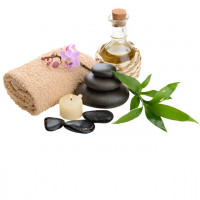Традиционный японский массаж имеет несколько техник, одна из наиболее популярных - Шиатсу. Техника шиатсу - техника надавливания пальцами на определенные участки тела. В некоторых случаях используется ладонь руки.
Длительные стрессовые нагрузки приводят к разбалансировке в организме человека, некоторые участки начинают выступать в роли "блокаторов" правильной работы различных внутренних органов. Соответственно человек ощущает недомогание, дискомфорт и болезненность на фоне быстрой утомляемости. Напряжение, которое воздействует на человека длительное время - пагубно влияет и на психологическое состояние человека, а соответственно и на работоспособность.
Нет ни одного человека который бы не использовал такой простой прием снятия напряжения - как легкое надавливание пальцами на виски, брови и т.д. Собственно в этом и есть секрет, при таком воздействии напряженные участки расслабляются, из мышц выводится излишняя молочная кислота, что в свою очередь приводит к запуску внутренних восстановительных процессов - это частный случай. Мастера Шиатсу пошли дальше развив технику до уровня практической терапии, и сегодня техника шиатсу регламентируется как лицензированная, Министерством здравоохранения и благосостояния Японии, медицинская терапия.
Данная техника широко практикуется у нас в стране и как в каждом деле важно, чтобы им занимался неастоящий специалист. Остерегайтесь подделок! В Японии Шиатсу-практик должен иметь лицензию Министерства здоровья и благополучия, для этого мастер должен учится не менее 3 лет или 2200 часов по образовательной программе.
Показания: заболевания нервной системы (неврит лицевого нерва, невралгия тройничного нерва, невралгия затылочного нерва, радикулит, плекситы, спастические и вялые параличи, неврастения, мигрень, невралгия и неврит наружного нерва бедра, сексуальный невроз, ночное недержание мочи), заболевания сердечно-сосудистой системы (гипертоническая болезнь, гипотония, стенокардия, облитерирующий эндоартериит, варикозное расширение вен), заболевания органов дыхания (пневмония, плеврит, бронхиальная астма и др.), заболевания желудочно-кишечного тракта (гастрит, язвенная болезнь желудка и 12-перстной кишки, колит, энтероколит), повреждения опорно-двигательного аппарата, не требующие оперативного лечения.
Противопоказания: заболевания, требующие оперативного хирургического вмешательства, инфекционные заболевания, кожные заболевания воспалительно-аллергического характера, общее тяжелое состояние больного, острая стадия туберкулеза, злокачественные и доброкачественные новообразования, капилляротоксикоз, изменения сосудов, сопровождающиеся образованием гематом.

